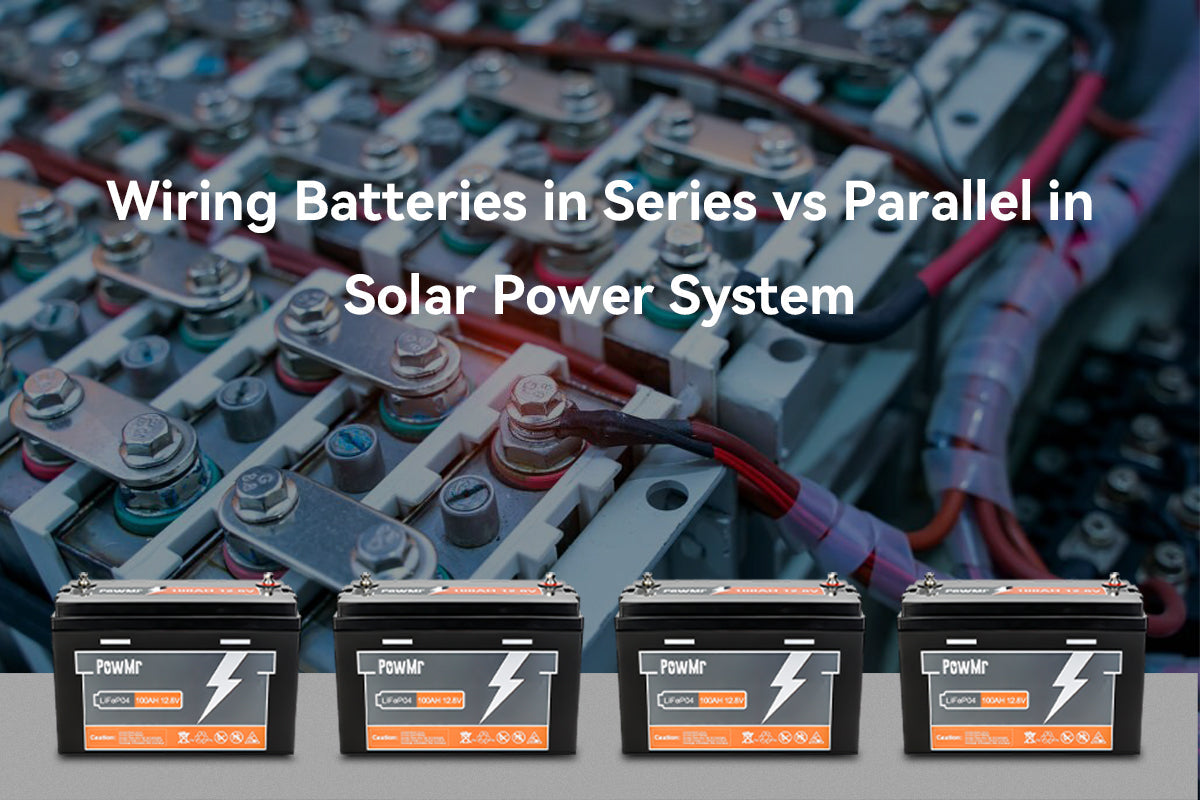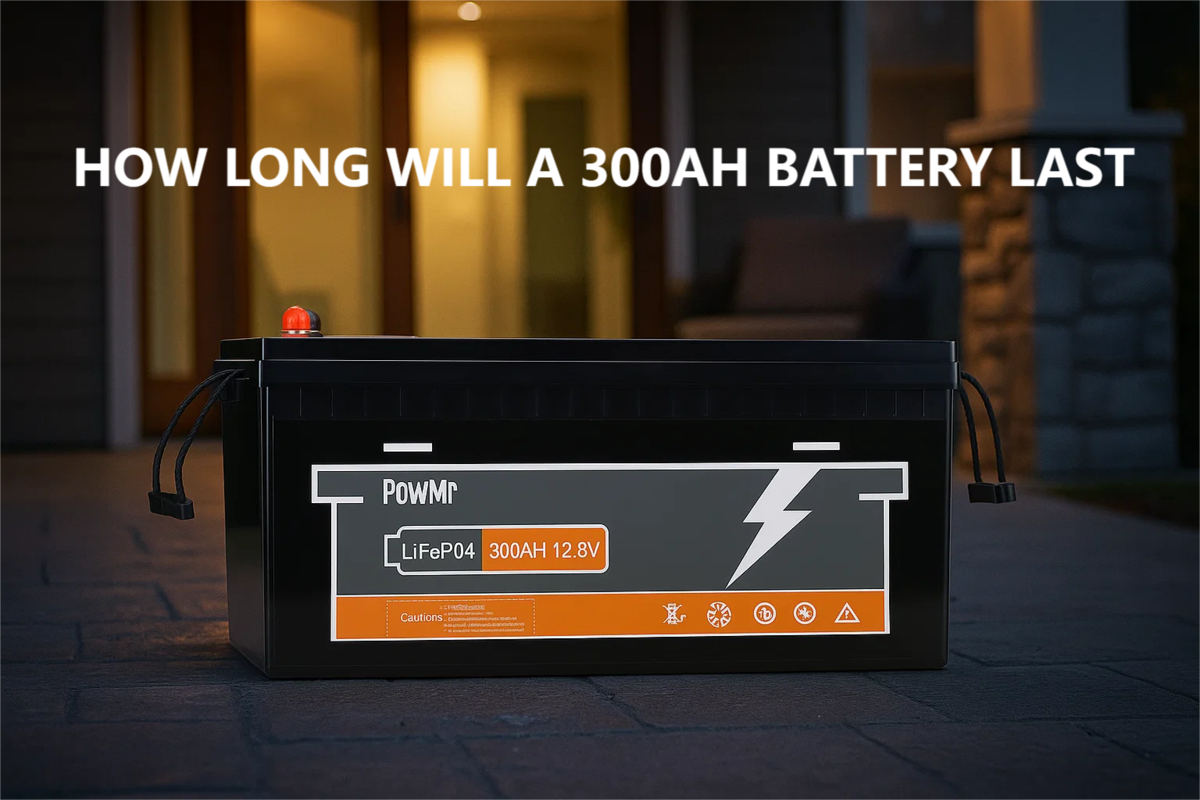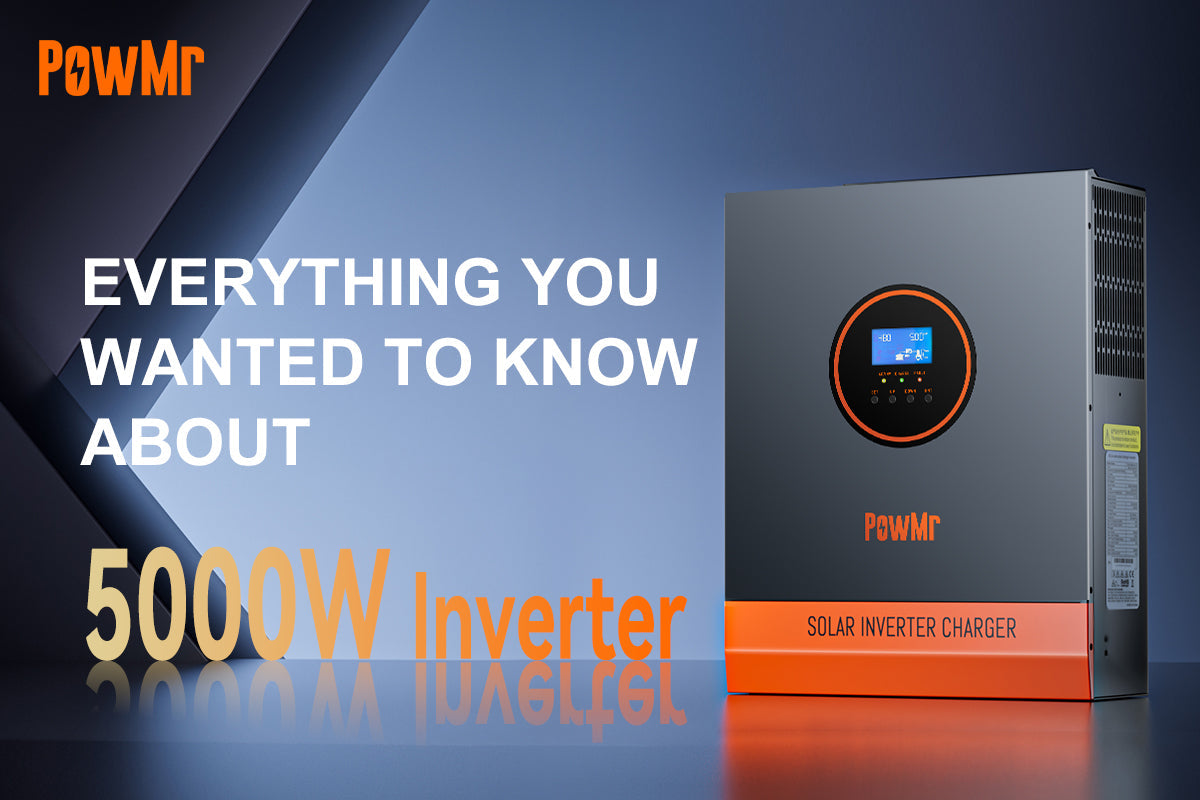In the world of solar power systems, the connection of batteries is a critical factor influencing overall performance. The decision to wire batteries in series or parallel, or a combination of both, significantly impacts the efficiency and longevity of the system. This comprehensive guide explores the intricacies of these options.
- Batteries in series vs. parallel - What's the difference?
- Wiring battery in series
- Number of batteries in series
- Advantages of wiring batteries in series
- Disadvantages of wiring batteries in series
- Wiring batteries in parallel
- Number of batteries in parallel
- Advantages of wiring batteries in parallel
- Disadvantages of wiring batteries in parallel
- Batteries in series vs parallel: Which is right for you?
- Can you wire batteries in series and parallel?
- Tips of solar batteries connection
Batteries in series vs. parallel - What's the difference?
The right battery configuration for you depends on the energy needs of your device and your own. Here's a quick look at how each type of connection works:
- Series Connection = Voltage Adds Up, Capacity Stays the Same.
- Parallel Connection = Capacity Adds Up, Voltage Stays the Same.
| Feature | Series Connection | Parallel Connection |
|---|---|---|
| Voltage (V) | Sum of all battery voltages | Stays the same as a single battery |
| Capacity (Ah) | Stays the same as a single battery | Sum of all battery capacities |
| Max Current (A) | Stays the Same (Limited by the weakest battery) | Adds Up (Sum of all batteries' max currents) |
| Load Distribution | Full System Current on Each Battery | System Current is Divided Among Batteries |

Wiring battery in series
Attach the negative end of the first battery to the positive end of the second battery. Continue this "daisy chain" pattern for all batteries. The last thing your bank will do is connect the positive terminal of the first battery to the negative terminal of the last battery.
Related Article:
Number of batteries in series
The number of series connections you need depends on the voltage your system needs, like 12V, 24V, or 48V.
- A 12V system is the most basic solar configuration, requiring only a single 12V battery. It suits motorhomes, boats, camping gear, and low-power lighting, delivering modest output for mobile use.
- A 24V system requires connecting two 12V batteries in series to achieve a total voltage of 24V. Common in medium-sized motorhomes, small off-grid homes, and telecom stations, it halves current compared to 12V, reducing losses and improving efficiency.
- 48V system is the most common configuration for residential solar energy storage, requiring four 12V batteries in series. It is most widely used in residential storage and larger installations.

Also, safety certifications and insurance requirements may limit the use of series connections. For example, you can connect up to four PowMr 12V 100Ah batteries in series.
Always adhere the manufacturer's specified maximum values, taking into account the limits of the battery management system, safety standards, certification requirements, and warranty obligations.
Advantages of wiring batteries in series
Increased Voltage: By connecting four 12V 100Ah LiFePO4 batteries in series, a robust 48V system is achieved without sacrificing overall capacity. This connection maintains a 100Ah capacity, showcasing the versatility of series wiring.
Lower Current & Thinner Cables: For the same amount of power (Power = Voltage × Current), a higher voltage results in a lower current. This allows you to use smaller, less expensive wiring and reduces energy loss over long cable runs.
Enhanced Efficiency in Power Transmission: The boost in system voltage resulting from series wiring translates to a reduction in system current. This, in turn, enables the utilization of thinner wiring, leading to improved efficiency in power transmission and minimizing voltage drop within the system.
Disadvantages of wiring batteries in series
Limited by the Weakest Battery: In a series connection, overall performance is constrained by the weakest battery. Differences in State of Charge among batteries can compromise the entire bank. Therefore, effective balancing with a high-quality BMS is crucial to protect the pack and ensure long-term reliability.
Reduced Redundancy: If one battery in a series configuration fails or drops in capacity significantly, it can impact the entire battery bank, affecting the overall performance of the connected devices or the entire system.
Elevated Voltage Application Limitations: Performing this action requires all your applications to operate at an elevated voltage. For instance, when you link two 12V batteries in series, the resulting voltage is 24V. Without employing a converter, you won't be able to supply power to any 12V appliances in this setup.
Wiring batteries in parallel
When connecting batteries in parallel, link the positive terminals together and connect the negative terminals together. It's easy to wire up a small number of batteries, but when you have a lot of them in parallel, you need to make sure that the circuit is designed well so that the current is evenly distributed.
To avoid overheating or a shorter lifespan due to uneven current distribution, it is best to use diagonal wiring or battery busbars. Please see our professional guide for more information on wiring schemes and best practices.
Related Article:
Number of batteries in parallel
The number of batteries that can be connected in parallel depends on several factors, including the capacity of the Battery Management System (BMS), wiring specifications, and the manufacturer's specific recommendations.
Within safe limits, the number of batteries can be determined based on the duration of power supply required by the system. Most battery systems support 2-4 batteries connected in parallel for residential applications.
Consider an off-grid motorhome with a daily consumption of 10kWh:
- A 48V, 100Ah (5kWh) battery requires two parallel banks for two days' backup.
- Four parallel banks are needed for four days' backup.

The scalability of parallel battery connections simplifies capacity planning, proving particularly advantageous for applications requiring extended autonomous operation. Examples include off-grid systems, backup power during prolonged outages, or seasonal energy storage.
Advantages of wiring batteries in parallel
Increased Capacity & Runtime: Connecting batteries in parallel increases the total capacity while keeping the voltage of the battery system constant, extending the system's power supply duration.
For example, if you have two 24V 100Ah batteries connected in parallel, the total capacity becomes 200Ah. The voltage remains the same, but the working duration of the batteries is doubled.
Related Post:
How long will a 200ah battery last – amp hours explained
2 Steps to calculate how long will a 12v battery last with inverter
System Redundancy: If one battery in a parallel configuration experiences degraded performance or fails, the remaining batteries can continue to supply power to the system. This provides better fault tolerance compared to series configurations, though overall capacity will be reduced.
Voltage Compatibility: Parallel wiring maintains the same voltage as individual batteries, eliminating the need for voltage converters. A 12V parallel bank can directly power all 12V appliances and devices without additional conversion equipment.
Disadvantages of wiring batteries in parallel
Higher Current Requirements: Parallel connections increase the total current for the same power output because the system voltage is lower than in series arrangements. This requires thicker cables to safely handle the higher amperage, adding complexity to installation.
Increased Cable Costs and Losses: Using larger-diameter cables reduces voltage drop and internal resistance but increases material costs. Overall, parallel setups are generally more expensive and labor-intensive than equivalent series systems.
Imbalanced Load Distribution: Batteries in parallel may discharge unevenly due to differences in internal resistance or state of health. Without proper balancing, some batteries work harder than others, leading to uneven wear and potentially shortening the lifespan of the entire battery bank.
Batteries in series vs parallel: Which is right for you?
The decision between series and parallel wiring is not about which is "better," but which is the right tool for your specific job. Let this simple guide make the choice clear:
Choose a SERIES Connection if:
- You need higher voltage. Your primary goal is to run a 24V, 48V, or higher-voltage inverter or appliance.
- Efficiency over long distances is key. You are building a larger stationary system (like an off-grid cabin) where minimizing wire thickness and power loss is important.
- You have identical, brand-new batteries and a high-quality BMS to manage the critical task of cell balancing.
Choose a PARALLEL Connection if:
- You need longer runtime. Your main objective is to maximize the amp-hour capacity to keep your existing 12V (or 24V) system running for as long as possible.
- You need to power high-draw devices. You need to combine the maximum discharge current of multiple batteries to start a powerful inverter, motor, or other heavy load.
- System redundancy is a priority. You want your system to remain operational even if one battery fails.
Can you wire batteries in series and parallel?
You can connect batteries in series and parallel, simultaneously achieve higher voltages and greater capacity, whilst distributing current across multiple paths to reduce the load on individual cells.
Here is an example of building a 24V system using 12V 100Ah batteries, which allow maximum of four in series and four in parallel. The optimal solution is to connect two battery groups in series to achieve a 24V 100Ah specification. By creating four of these series pairs and then connecting the pairs in parallel, the system voltage remains 24V while the capacity increases to 400Ah.

This approach proves particularly practical when existing battery specifications cannot fully meet voltage and capacity requirements, enabling flexible customisation solutions using standard batteries.
Tips of solar batteries connection
Connecting solar batteries involves several considerations to ensure a safe and efficient setup. Here are some tips for connecting solar batteries:
Battery selection
It is important to ensure that all batteries used in a series/parallel connection are of the same type and the same age, have the same capacity and voltage, and are properly balanced to prevent overcharging or discharging of individual batteries. Lead-acid and lithium-ion batteries are common types of solar batteries for inverter. Consider factors like capacity, voltage, and cycle life.
Charge controller and inverter compatibility
Adjust charge controller settings based on battery manufacturer recommendations, covering absorption voltage, float voltage, and temperature compensation. Ensure inverter compatibility with battery bank voltage and type, noting specific connection requirements.
Cable sizing
Use appropriately sized cables to connect batteries. Undersized cables can lead to voltage drops and reduced system efficiency. Refer to a battery cable sizing chart of the product manual based on the current and distance.
Temperature and ventilation
Install batteries in a well-ventilated area, and consider venting systems if necessary. Additionally, batteries perform optimally within a specific temperature range. Avoid exposing them to extreme temperatures, and consider temperature-compensated charging if your charge controller supports it.
Fusing and circuit protection
Install appropriate battery fuses and circuit breakers to protect the battery bank from overcurrent and short circuits. Place fuses on both the positive and negative sides of the battery bank.
Always refer to the manufacturer's guidelines and specifications for the specific batteries and components you are using in your solar power system. Additionally, local electrical codes and regulations should be followed during installation. If you are unsure or uncomfortable with the installation process, consider hiring a professional to install and connect the solar batteries. This can help avoid mistakes and ensure a safe and efficient system.
Frequently asked questions (FAQ)
Can I mix old and new batteries in my bank?
Absolutely not. An older battery will cripple the performance and lifespan of the entire bank, regardless of the connection type.
Which connection puts more stress on individual batteries?
It depends on the type of stress.
- For current stress, Series is higher. In a series circuit, every battery must handle 100% of the system's current. In a parallel circuit, the current is divided.
- For voltage balancing stress, Series is more complex. The BMS must actively manage the voltage of each battery individually. A parallel setup is largely self-balancing from a voltage perspective.
My inverter needs 150A, but my batteries are only rated for 100A max discharge. What should I do?
You must use a parallel connection. If you connect two 100A-max batteries in parallel, your new bank can deliver a combined 200A, safely meeting your inverter's needs. A series connection would not increase the m ax current.
Do my cables need to be the same length?
For parallel connections, yes, it is critical. Using cables of identical length and gauge ensures that current is distributed evenly. Uneven cable lengths will cause uneven load sharing.



